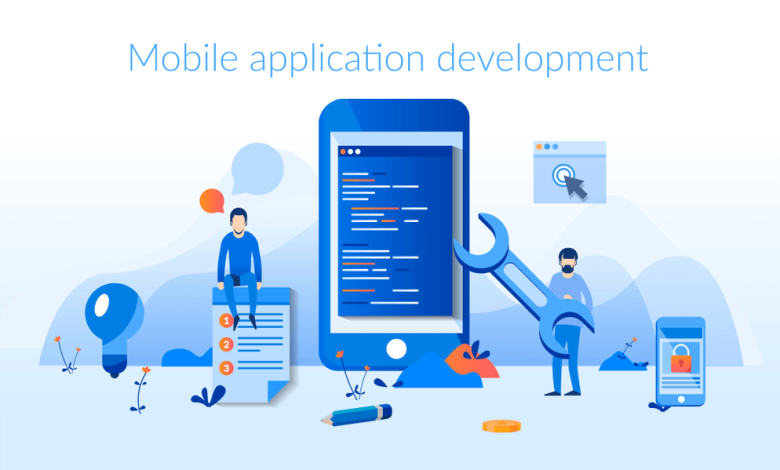How To Build A Successful Mobile App: 12 Step Process

Which customer-centric key performance indicator will my app address? is a question you need to ask yourself before you start developing an app. What is the number of present and future clients I want to reach? Will my mobile app be superior than that of all my rivals?
With this knowledge in hand, you can now start to fully immerse yourself in the twelve phases listed below that all successful apps share.
Step 1: Value proposition
You shouldn’t make your app a carbon replica of your website or online store.
It should provide the user with much more than just information and common functions. That is due to a straightforward reality. I dare say that downloading an app is a private conduct. As a consumer, you invest the effort to download an app to your most private gadget in the hopes that it would eventually benefit you.
Not only that, but you should outline the precise issue your app will resolve before moving on to brainstorming your brand’s unique selling points, your target audience, and how you’ll position your app to obtain the most downloads and interaction. Your value proposition statement ought to mention your market segment and how you compare to rivals.
Your app’s unique value proposition (UVP) is not a statement, a catchphrase, or a snappy slogan, despite the way it might sound.
What clients gain out of utilizing your app that they won’t obtain through any other channels must be succinctly and clearly described in the UVP. An incredible unique value proposition has the following 4 essential qualities:
Clear – It should be simple and free of business jargon.
Benefits-focused – It should highlight the advantages of your app.
Unique – Specify what makes your app distinct from those of your competitors.
Concise – It should only take a consumer 10 to 15 seconds to understand the value proposition of your product.
Step 2: To ascertain feasibility, conduct market research and a SWOT analysis (Strengths, Weaknesses, Opportunities, and Threats)
The goal of a SWOT analysis is to help any company or entrepreneur discover the strengths, weaknesses, opportunities, and threats associated with a particular business idea. Before you commit a lot of time and money in a project, a SWOT analysis aims to reveal any “unexpected” surprises related to it.
It’s important to conduct a SWOT analysis (Strengths, Weaknesses, Opportunities, and Threats) before developing a successful mobile app. Sadly, 99 percent of app developers never think to do this.
Before you invest money, time, and effort into a concept, SWOT helps you validate it. As a result, it is the crucial step to avoid having a major moment later.
It should be noted that a SWOT analysis does not provide a definitive answer as to what kind of app you should develop. However, it aids in identifying and analyzing the major issues that are hurting your mobile idea or strategy.
Strengths – You can answer crucial inquiries concerning your approach by identifying the advantages of your proposed mobile app. What are the main advantages that your app will offer to your target audience? Will it finally result in a transaction or a move that boosts your revenue? How is your app superior to those of your rivals? What makes your app special?
Weaknesses – This includes constraints and roadblocks that disadvantage your app in the market. However, the analysis should assist you in identifying these shortcomings so you can come up with strategies to make them work in your favor. This step allows you to foresee failures and make appropriate plans to prevent them.
Opportunities – Look closely at your skills and flaws and consider how you might improve upon them to create fresh chances for you. The good news is that there are numerous chances in the field of mobile app development.
Threats – You need to be able to stop any threat when creating a successful app. This stage of the SWOT analysis is crucial because of this. Asking yourself these key questions can help you discover your possible threats: How do your competitors back off their threats? Is your app ready to face the difficulties posed by evolving technology, shifting market conditions, and altered user behavior?
Step 3: Defining your mobile app’s objectives
Goal-setting is a crucial step in the process of developing a successful mobile app.
You will now decide on your priorities and a clear course of action over the upcoming few weeks or months. You can use these objectives to determine where you are now, where you want to be, and how to get there.
Step 4: Generate a list of the main app use cases and ideal user profiles.
Start describing the main use cases for your new app once you have outlined its main objectives. The user experience and overall usability benefit greatly from use cases.
When segmenting a worldwide audience, specific app usage data such as language preference, frequency of use, if push notifications are enabled, etc. can be useful.
Step 5: Understand how your app will be monetized.
If an app cannot support itself, it will fail. And it must generate revenue in order to become self-sufficient.
In light of the fact that most users are accustomed to free apps, the bigger challenge is how you will monetize your software.
In order to guarantee the app’s long-term viability, a suitable monetization plan is essential.
It takes careful balance to guarantee that the software generates the maximum income without scaring off potential customers by being too pricey.
Step 6: Establish the app’s structure
When you are prepared to start working, you should make plans for the quickest turnaround time.
The steps in the process of developing a successful mobile app that are the most crucial are choosing the framework and planning the app.
Step 7: Working with the right team
You are only as excellent as the team you are surrounded by when it comes to developing mobile applications. That is why it is crucial to assemble a group of elite app developers, designers, strategists, and other critical professionals who will make sure your product not only stands out but also dominates the market.
Step 8: Define the product roadmap and detailed requirements
A thing that is carefully constructed lasts forever.
Additionally, a successful mobile app won’t be effective unless it has a carefully thought-out product roadmap.
This is a plan that outlines the app’s immediate and long-term objectives.
More specifically, your product roadmap will serve as a guide for carrying out your mobile app development strategy provided by mobile app development company and assist in defining your app vision.
Step 9: User-pleasing mobile app designs
Users will either keep using your app or remove it after the first use depending on its usefulness and design.
When creating an app that will appeal to the end user, numerous considerations must be made.
Excellent apps are simple to use. Far from it, in actuality.
They are straightforward and convenient to use.
The hardest type of design, however, is basic design. Nevertheless, that need to be your top priority.
Step 10: Develop the app
You’re rocking that Invision prototype and your app ideas look terrific. What’s next? Of course, creating the real app is the next step.
To make sure the app is what was intended, start with a prototype. Create and test the flow that will be used the most. Make sure it is a realization of the idea. Following a successful test of the prototype, continue with the entire development process.
Step 11: Test your app multiple times.
Your credo for developing mobile apps should be “test, test, and test.”
And let’s be honest: the last thing you want to see after investing countless hours into creating a terrific app is a flood of unfavorable customer reviews and ratings.
Step 12: Launch, learn and optimize. Have proper support in place
The process of creating a successful mobile app has finally reached its conclusion. Finally, you’re prepared to use it.
This step will make sure that your launch goes off without a hitch.
Your launch date serves more purposes than merely creating awareness and getting your app listed in stores. You should have the chance to conduct numerous user interviews, gather feedback, and be ready for the following stage, iteration.





